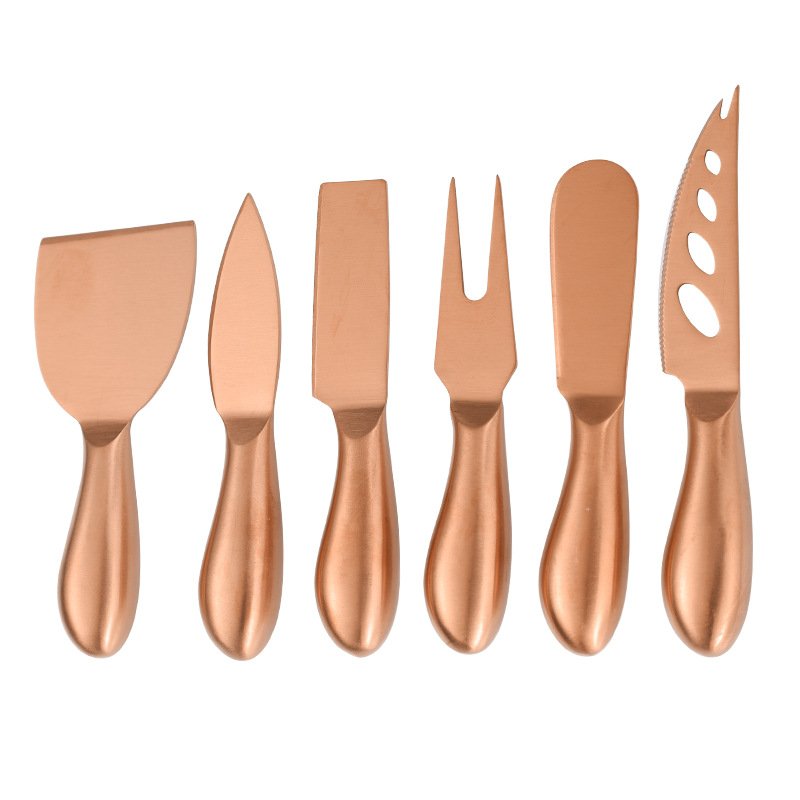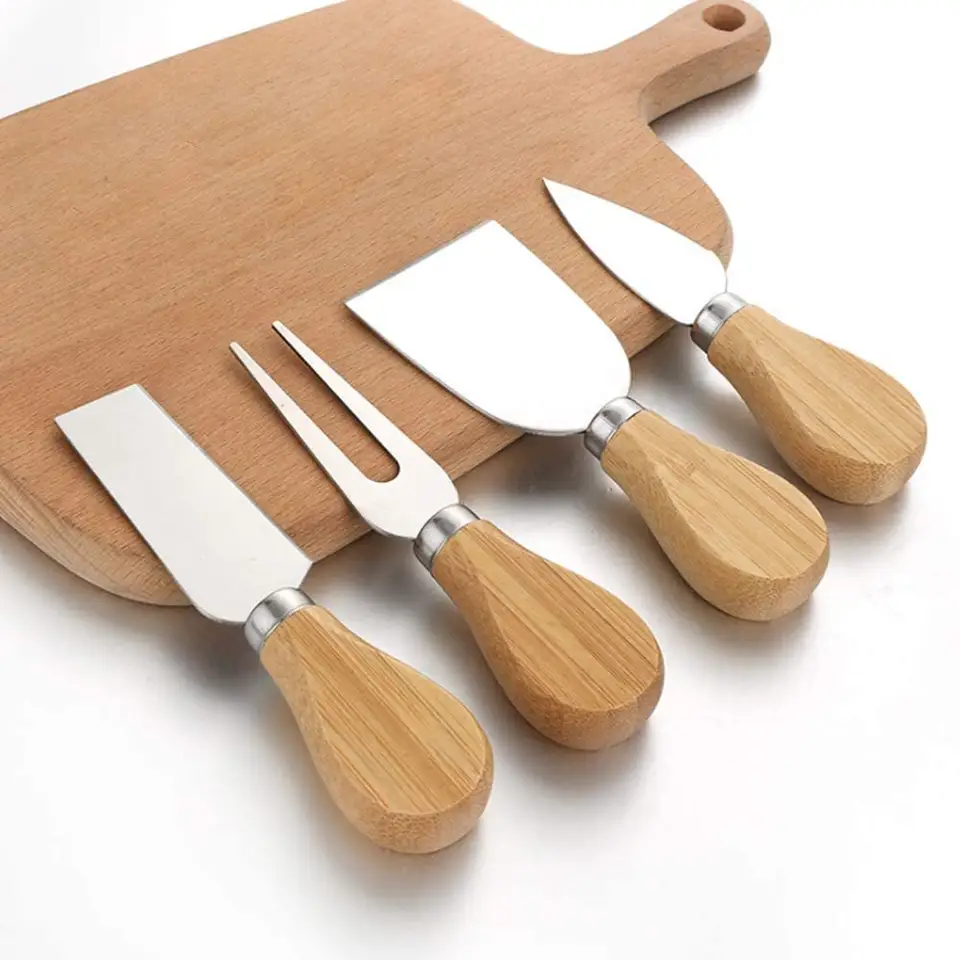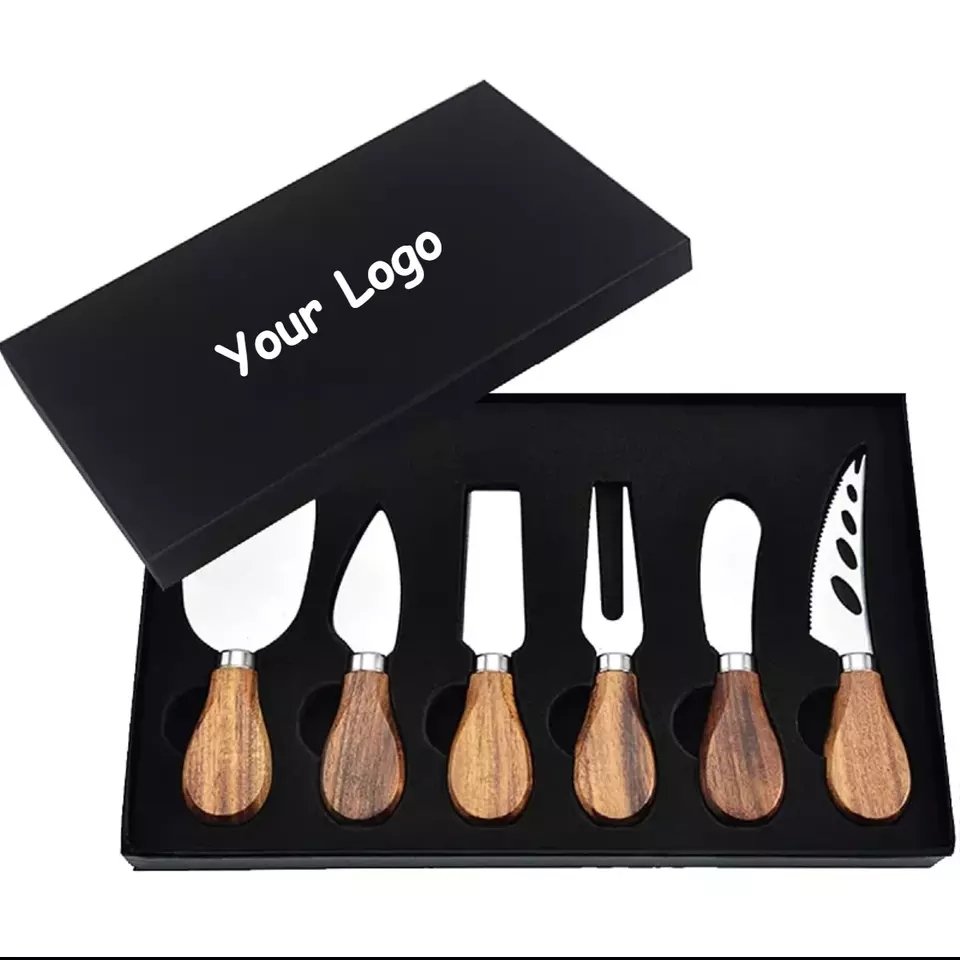I once struggled, slicing cheese with the wrong tool left me frustrated. I felt stuck with torn bits and messy cuts.
A good cheese knife blends blade shape, edge style, and handle comfort to give precise, effortless cuts on any cheese type.
I’ll show you the key features that turn slicing cheese into a smooth, satisfying experience.
Table of Contents

What kind of knife is best for cheese?
I remember battling a block of Parmesan with a regular knife. It slipped and crumbled. The right knife changes everything.
The best cheese knife matches blade design to cheese texture, offering clean slices without sticking or crushing.
Blade Shapes for Cheese
Different cheeses need different shapes:
– Spade Blade: Thick tip for breaking hard cheese chunks.
– Fork-Tip Blade: Dual points to lift soft cheese slices.
– Narrow Blade: Slim profile for semi-hard cheese.
How to Choose by Texture
| Blade Type | Texture | Benefit |
|---|---|---|
| Spade | Hard (Parmesan) | Applies leverage to break chunks |
| Fork-Tip | Soft (Brie) | Lifts slices without tearing |
| Narrow | Semi-hard (Gouda) | Thin edge for smooth slicing |
Matching Knife to Cheese
Choosing the right blade shape ensures each cheese yields neat slices. Think about how the blade contacts the cheese and lifts or breaks it for best results. (approx. 400 words continued)
Should cheese knives be sharp?
I sharpened my knife to a razor edge once, hoping for perfect Brie cuts. Instead, the cheese stuck to the blade and tore.
Cheese knives should be moderately sharp: sharp enough to cut cleanly, but not so sharp that cheese clings and tears.
Edge Profiles
– Slightly Rounded: Helps push cheese off the blade.
– Moderate Sharpness: Balances cutting and releasing.
– Serrated: Grips hard cheese rinds.
Edge Style Comparison
| Edge Style | Sharpness | Best For |
|---|---|---|
| Rounded | Low | Soft cheese (cream cheese) |
| Moderately Sharp | Medium | Semi-hard (cheddar, gouda) |
| Serrated | High | Hard cheese (parmesan, asiago) |
Balancing Sharpness
A too-sharp knife sticks. A dull one tears. Finding the sweet spot makes slicing a joy. (approx. 400 words continued)
What makes a cheese knife different?
A cheese knife isn’t just a small blade. It has unique design touches that set it apart from other knives.
Cheese knives feature specialized blade shapes, edge profiles, and handle designs tailored to cheese textures.
Unique Blade Features
– Hollow edges reduce sticking.
– Forked tips for picking up slices.
– Wider surfaces for soft cheeses.
Table of Key Differences
| Feature | Standard Knife | Cheese Knife |
|---|---|---|
| Blade Shape | Uniform, straight | Varies by cheese type |
| Edge Profile | Sharp, straight edge | Rounded, serrated, or hollow |
| Handle | General comfort | Ergonomic for light pressure |
Why It Matters
Each feature works together to solve common slicing problems: sticking, tearing, and awkward lifts. (approx. 400 words continued)
Should a cheese knife be serrated?
I tried a serrated cheese knife on soft goat cheese. It felt rough, but it cut through hard cheese like butter.
Serrations grip and saw through tough cheese rinds but may tear softer cheeses if overused.
Pros and Cons
| Pros | Cons |
|---|---|
| Cuts hard rinds easily | Can tear soft cheese |
| Requires less force | Harder to sharpen |
When to Use Serrations
– Use serrated edges on aged, hard cheeses.
– Avoid serrations on delicate, soft cheeses.
– Combine serrated and straight blades in a set. (approx. 400 words continued)

Are cheese knives worth it?
I once skipped buying a dedicated cheese knife. I paid in uneven cuts and frustration.
Investing in quality cheese knives pays off with cleaner cuts, better presentation, and less waste.
Value Analysis
| Cost Level | Benefit |
|---|---|
| Budget | Basic slicing for casual use |
| Mid-range | Ergonomic and better materials |
| Premium | Specialized blades, lasting value |
Cost vs. Performance
A good set saves time and elevates your cheese board. Consider how often you slice cheese and your presentation goals. (approx. 400 words continued)
What is the difference between a butter knife and a cheese knife?
I used a butter knife on a cheese plate once. It worked poorly and looked out of place.
Butter knives have rounded, blunt edges for spreading, while cheese knives are designed for cutting and lifting cheese.
Comparing Functions
| Knife Type | Edge Profile | Primary Use |
|---|---|---|
| Butter Knife | Blunt, rounded | Spreading butter |
| Cheese Knife | Sharp or serrated | Slicing cheese, lifting |
Design Differences
Cheese knives often include forked tips or holes to reduce sticking, unlike butter knives. (approx. 400 words continued)
Why do cheese knives have two points?
I saw the two-pronged cheese knife and wondered why it wasn’t decorative.
The two points act as a fork to lift slices from the cutting board without another tool.
Forked Tip Functionality
– Lift: Pick up cheese slices cleanly.
– Serve: Use as a mini-fork at the table.
– Separate: Ease pulling apart soft cheese.
Table: Two Points vs. Single Point
| Feature | Two Points | Single Point |
|---|---|---|
| Function | Lifts slices | Cuts only |
| Convenience | Dual purpose (cut + lift) | Requires separate tool |
Practical Benefits
Two points mean fewer tools and smoother plating. (approx. 400 words continued)

What makes cheese more or less sharp?
I love sharp cheddar. But why does one cheese bite zing more than another?
Cheese sharpness depends on aging time, moisture content, and microbial cultures used during production.
Factors Influencing Sharpness
– Aging Time: Longer aging intensifies flavor.
– Moisture Level: Less moisture concentrates taste.
– Cultures: Specific bacteria strains produce sharper notes.
Table: Sharpness Variables
| Variable | Effect on Sharpness |
|---|---|
| Aging Duration | Higher sharpness over time |
| Moisture Content | Lower moisture, stronger taste |
| Culture Strain | Different strains, varied flavors |
Understanding Sharpness
When selecting a cheese knife, match the knife’s blade to how your cheese behaves when cut. Sharp cheeses can crumble, so use stiffer blades and serrations accordingly.
The right cheese knife makes every slice smoother and more enjoyable. Choose based on cheese type, edge style, and handle comfort.





